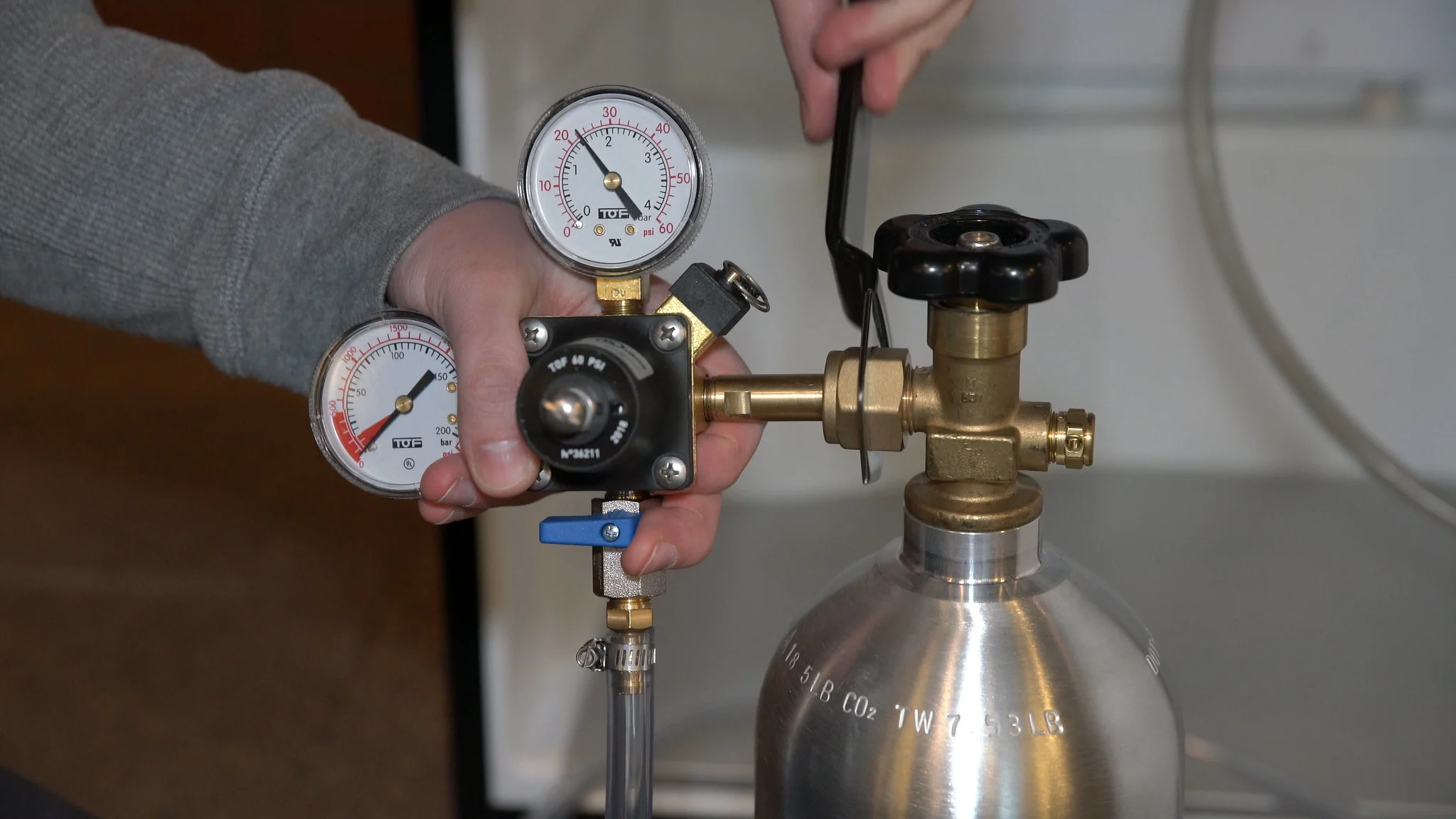

Articles
What Type Of Gases Can You Use On A Kegerator
Modified: February 18, 2024
Learn about the different types of gases that you can use on a kegerator in our informative articles, and get ready to take your beer experience to the next level.
(Many of the links in this article redirect to a specific reviewed product. Your purchase of these products through affiliate links helps to generate commission for Storables.com, at no extra cost. Learn more)
Introduction
Welcome to the world of kegerators, where the pleasure of enjoying a perfectly poured, frothy glass of beer is just a tap away. A kegerator is a specialized appliance that refrigerates and dispenses beer from a keg, allowing you to have a bar-like experience in the comfort of your own home. But have you ever wondered how a kegerator works and what makes it possible to pour that delicious pint? One key component of a kegerator setup is the gases used to carbonate and dispense the beer.
In this article, we will explore the different types of gases used in a kegerator and their roles in achieving the desired carbonation and dispensing process. Whether you’re a beer enthusiast looking to dive deeper into the world of kegerators or a novice contemplating setting up your own home draft system, understanding the various gases involved will help you make informed decisions and ensure a delightful beer-drinking experience.
So, let’s raise our glasses and delve into the fascinating realm of kegerator gases!
Key Takeaways:
- Choosing the right gas for your kegerator is crucial for achieving the perfect carbonation and dispense quality based on beer style, carbonation level, dispense method, and any novelty considerations. Safety should always be a top priority when handling and storing gases.
- Carbon dioxide (CO2) is the primary gas used in kegerators for carbonation and dispensing, while nitrogen (N2) and blends of CO2 and nitrogen offer a smooth, creamy mouthfeel, especially for stouts and Nitro beers. Argon (Ar) and helium (He) have niche applications, with argon used for specialized beer or wine preservation and helium adding a touch of novelty and fun to special occasions.
Read more: What Can You Use A Juicer For
Overview of a Kegerator
Before we delve into the specifics of kegerator gases, let’s begin with a brief overview of what a kegerator is and how it works. A kegerator is essentially a refrigerator unit that is customized to store, cool, and dispense beer from a keg. It is a popular choice for home beer enthusiasts, as it allows them to have a constant supply of fresh, draft beer without the need for individual bottles or cans.
At the heart of a kegerator is a refrigeration system that keeps the beer at an optimal temperature, typically between 36 to 40 degrees Fahrenheit (2 to 4 degrees Celsius), ensuring that the beer remains fresh and carbonated. The cooling mechanism is designed to maintain the desired temperature range consistently, preventing the beer from becoming too warm or too cold.
The key components of a kegerator include a keg coupler or tap, which is attached to the keg and allows for easy access to the beer, a CO2 tank to pressurize the system, and gas and beer lines to transport the gases and beer from the keg to the tap. The CO2 tank provides the necessary pressure to carbonate the beer and push it through the system, resulting in a smooth and controlled flow.
To dispense the beer, a faucet or tap handle is used, allowing the user to control the flow rate and pour the desired amount into a glass. Some kegerators also come with additional features such as temperature control settings, digital displays, and multiple taps, offering versatility and customization options.
Overall, a kegerator provides a convenient and efficient way to enjoy draft beer in the comfort of your own home. It eliminates the need for individual bottles or cans, reduces waste, and ensures a fresh and authentic drinking experience, comparable to what you would find at a bar or pub.
Now that we have a basic understanding of kegerators, let’s move on to the crucial role that gases play in the kegerator setup.
Why Gases are Needed for a Kegerator
When we think about beer, we often associate it with carbonation, that delightful fizz that tickles our taste buds and enhances the overall drinking experience. In a kegerator, gases are essential for two main purposes: carbonation and dispensing.
Firstly, gases are used to carbonate the beer. Carbon dioxide (CO2) is the primary gas utilized in kegerators for this purpose. When beer is brewed, fermenting yeast produces CO2 as a natural byproduct. However, during the kegging process, much of the CO2 is lost, resulting in a flat-tasting beer. To restore the desired level of carbonation and create that refreshing effervescence, additional CO2 is introduced into the keg.
Secondly, gases are required for dispensing the beer from the keg to the tap. The CO2 gas applies pressure to the keg, forcing the beer out of the keg and into the beer lines. This pressure control is essential for maintaining a consistent flow and ensuring that the beer is dispensed smoothly without excess foam or wasted beer. By regulating the pressure, you can control the carbonation level and prevent over- or under-carbonation.
It is important to note that different beers require different levels of carbonation. For example, lighter beers like lagers and pilsners typically have higher carbonation levels, whereas stouts and ales may have lower levels. By using gases in a kegerator, you have the flexibility to adjust the carbonation level based on the style and personal preference, allowing you to achieve the perfect pour.
In addition to carbonation, the gases also help to maintain freshness and prevent oxidation. When beer is exposed to oxygen, it can quickly become stale and lose its flavor. By pressurizing the system with gases, the beer remains protected from external oxygen, ensuring that each pour is as fresh and flavorful as the first.
Now that we understand the importance of gases in a kegerator, let’s explore the different types of gases commonly used in kegerator setups.
Types of Gases Used in a Kegerator
When it comes to kegerators, there are several types of gases that are commonly used to carbonate and dispense beer. Let’s take a closer look at each of these gases and their characteristics:
1. Carbon Dioxide (CO2)
Carbon dioxide (CO2) is the most widely used gas in kegerators. It is responsible for carbonating the beer and providing the desired level of carbonation. CO2 is a colorless, odorless gas that is naturally produced during the fermentation process. It creates the bubbles and effervescence in carbonated beverages, including beer. CO2 is stored in pressurized tanks and is easily accessible for use in kegerators.
Read more: Where Can You Buy A Kegerator
2. Nitrogen (N2)
Nitrogen (N2) is another gas that is commonly used in kegerator setups, especially for certain beer styles like stouts and Nitro beers. Unlike carbon dioxide, nitrogen does not dissolve easily in beer, resulting in a smoother and creamier mouthfeel. Nitrogen is typically used in combination with carbon dioxide to achieve the desired level of carbonation and foam consistency. The combination of nitrogen and carbon dioxide creates smaller bubbles, giving the beer a velvety texture and a unique drinking experience.
3. Blends of CO2 and Nitrogen
Sometimes, a combination of carbon dioxide and nitrogen, known as beer gas, is used in kegerators. Different blends of CO2 and nitrogen can be used to achieve specific carbonation levels and foam characteristics. These blends are often used for beers that require a balanced carbonation level and a smooth, creamy head. Beer gas is a versatile option that allows for customization based on the beer style and personal preference.
4. Argon (Ar)
While carbon dioxide and nitrogen are the most common gases used in kegerators, argon (Ar) is occasionally used as well. Argon is an inert gas that does not react with the beer, making it ideal for certain specialty beers. It is used in specific kegerator setups to provide a unique serving experience, preserving the flavors and properties of the beer. Argon is often employed in wine kegerators, where it is used to prevent oxidation and maintain the quality of the wine.
5. Helium (He)
Although helium (He) is not typically used in regular kegerator setups, it is sometimes employed for special events or novelty purposes. Helium is lighter than air and produces a unique effect when used to dispense beer. It creates a fun and entertaining experience with helium-infused beer, causing the drinker’s voice to become high-pitched when consumed. However, it is important to note that helium should be used responsibly and sparingly, as it can lead to excessive foaming and waste of beer.
When choosing the type of gas for your kegerator, it is essential to consider the beer style, desired carbonation level, and personal preference. Now that we have explored the various gases used in kegerators, let’s move on to understanding how to choose the right gas for your specific needs.
Read more: What Can I Use As A Kegerator Ball Lifter
Carbon Dioxide (CO2)
Carbon dioxide (CO2) is the most commonly used gas in kegerators and plays a crucial role in carbonating and pressurizing the beer. It is a colorless, odorless gas that is produced naturally during the fermentation process. When CO2 dissolves in the beer, it creates carbonation, giving the beverage its characteristic bubbles and effervescence.
CO2 is stored in pressurized tanks and is readily available for use in kegerators. These tanks can be either refillable or disposable, depending on preference and availability. Refillable tanks are more cost-effective and environmentally friendly, as they can be refilled with CO2 by a specialty gas supplier. Disposable tanks, on the other hand, offer convenience as they come pre-filled and can be easily replaced when empty.
The main function of CO2 in a kegerator is to provide the necessary pressure to carbonate and dispense the beer. By applying pressure to the keg, CO2 forces the beer out of the keg and through the beer lines, ensuring a steady and controlled flow. The pressure is regulated using a CO2 regulator, allowing the user to adjust the carbonation level according to their preference.
It is important to note that different beer styles require different carbonation levels. For example, highly carbonated beers like wheat beers or Belgian-style ales typically have higher levels of CO2, resulting in a crisp and lively mouthfeel. On the other hand, beers such as stouts or porters may have lower levels of carbonation for a smoother drinking experience.
When using CO2 in a kegerator, it is crucial to monitor and maintain the pressure within the recommended range. Too much pressure can result in over-carbonated beer, leading to excessive foaming and a harsh taste. On the other hand, insufficient pressure can result in under-carbonated beer, lacking the desired effervescence and mouthfeel.
Care should also be taken when handling and storing CO2 tanks. These tanks are under pressure and should be secured properly to prevent accidents or leaks. It is advisable to store the tanks in a well-ventilated area away from heat sources or flames.
In summary, carbon dioxide (CO2) is the primary gas used in kegerators to carbonate and pressurize beer. It is responsible for creating the desired level of carbonation and ensuring a smooth and controlled dispensing process. By using CO2, beer enthusiasts can replicate the experience of freshly poured draft beer in the comfort of their own homes.
Nitrogen (N2)
Nitrogen (N2) is another gas commonly used in kegerators, especially for certain beer styles such as stouts and Nitro beers. Unlike carbon dioxide, nitrogen does not dissolve easily in beer. Instead, it creates smaller bubbles and a smoother mouthfeel, giving the beer a creamy and velvety texture.
Nitrogen is typically used in combination with carbon dioxide to achieve the desired carbonation and foam characteristics. The ratio of nitrogen to carbon dioxide can vary depending on the beer style and personal preference. The use of nitrogen in a kegerator results in a distinctive presentation and drinking experience, particularly with beers served on a Nitro tap system.
When nitrogen is introduced into a keg, it does not dissolve in the beer to the same extent as carbon dioxide. Instead, it remains in the headspace of the keg and creates a pressure barrier that prevents excessive carbon dioxide from escaping. This allows the beer to be dispensed with a smooth, cascading effect and a creamy head, often referred to as a “Nitro pour.”
In addition to the visual appeal, the use of nitrogen in a kegerator also affects the taste and texture of the beer. The smaller bubbles created by nitrogen produce a softer mouthfeel and reduced perceived bitterness, enhancing the overall drinking experience. Nitrogen is especially popular in darker, malt-forward beers like stouts and porters, as it complements their rich and smooth characteristics.
It’s important to note that using nitrogen on its own for carbonation purposes is not recommended, as nitrogen does not easily dissolve in beer and would result in under-carbonated beer. Therefore, nitrogen is typically used in conjunction with carbon dioxide to achieve the desired level of carbonation while benefiting from the unique characteristics it imparts.
When utilizing nitrogen in a kegerator setup, it is crucial to make some adjustments to the system. Nitrogen requires higher pressures than carbon dioxide for proper dispensing, typically in the range of 30-40 psi. This requires a different gas regulator specifically designed for nitrogen. Additionally, nitrogen systems require specialized Nitro taps, which have small restrictor plates to control flow and create the signature cascading effect when pouring the beer.
In summary, nitrogen (N2) is used in kegerators to enhance the texture, mouthfeel, and presentation of beer, particularly for stouts and Nitro beers. When combined with carbon dioxide, it creates a unique, creamy experience with smaller bubbles and reduced bitterness. By incorporating nitrogen into a kegerator setup, beer enthusiasts can enjoy a velvety smooth pint that stands out from traditional carbonated beers.
Blends of CO2 and Nitrogen
In kegerators, blends of carbon dioxide (CO2) and nitrogen (N2), commonly referred to as beer gas, are often used to achieve specific carbonation levels and foam characteristics. Blending these gases allows for greater flexibility in tailoring the beer’s carbonation and mouthfeel, providing a wide array of options to suit different beer styles and personal preferences.
Beer gas blends consist of varying proportions of CO2 and nitrogen, typically ranging from 70% CO2 and 30% nitrogen to 60% CO2 and 40% nitrogen. The specific blend chosen depends on the desired carbonation level, the style of beer being served, and the desired texture and creaminess of the head.
One of the main advantages of using beer gas is that it helps create a balanced carbonation level and a smooth, creamy head while reducing excessive foaming. The combination of CO2 and nitrogen produces smaller bubbles compared to CO2 alone, resulting in a velvety texture and improved mouthfeel.
Different beer styles benefit from different levels of carbonation. Lighter beers, such as lagers and pilsners, often benefit from higher levels of carbonation, which provide a crisp and refreshing drinking experience. On the other hand, heavier beers, like stouts and porters, may benefit from lower carbonation levels to enhance their smooth and rich flavors. Beer gas allows for fine-tuning of the carbonation levels, ensuring the best pour for each style.
It’s worth noting that the blend of CO2 and nitrogen can also affect the foam stability and appearance. Nitrogen has a positive impact on the foam, improving its retention and creating a dense, creamy head. This is particularly desirable for styles like Guinness, where the iconic thick and creamy head is a hallmark of the beer. By using beer gas, kegerator owners can recreate this characteristic foam profile and enhance the overall drinking experience.
When using beer gas in a kegerator, a separate gas regulator is required to accommodate the higher pressures needed for nitrogen. Additionally, the use of specialized Nitro taps is crucial to achieve the desired cascading effect and foam consistency.
Overall, blends of CO2 and nitrogen offer versatility and customization in the carbonation and foam characteristics of beer. By using beer gas in a kegerator setup, beer enthusiasts can enjoy a wide range of beer styles with the perfect carbonation, texture, and foam, providing a unique and satisfying beer-drinking experience.
Argon (Ar)
While carbon dioxide (CO2) and nitrogen (N2) are the most commonly used gases in kegerators, argon (Ar) is occasionally utilized in certain kegerator setups, especially for specialty beers. Argon is an inert gas, meaning it does not react with the beer and does not impart any flavor or aroma.
Argon is often used in wine kegerators, where it helps preserve the quality and freshness of the wine. Unlike CO2 or nitrogen, argon does not dissolve in the wine, eliminating the risk of altering the wine’s taste or texture. It forms a protective layer on top of the wine, preventing oxidation and keeping the wine in optimal condition for an extended period.
In some cases, breweries may experiment with kegerator setups that use argon to dispense specific beers, either to showcase unique flavors or to protect delicate ingredients. Since argon has no impact on the beer’s flavor or carbonation levels, it allows the true characteristics of the beer to shine through.
When using argon in a kegerator, a separate gas regulator designed for argon is required. The pressure settings and flow rates may differ from those used with CO2 and nitrogen, so it is essential to consult the kegerator manufacturer’s instructions or seek professional guidance when working with argon.
It’s important to note that argon is not a commonly used gas in kegerators, and its application is relatively niche. Its use is primarily reserved for specialized circumstances, such as specific beer styles or wine kegerator setups. If you are considering using argon in your kegerator, it is advisable to do thorough research and consult with experts to ensure the best results.
In summary, while carbon dioxide and nitrogen are the primary gases used in kegerators, argon has its place in certain specialized setups. Argon is an inert gas that does not affect the flavor or carbonation of beer and is occasionally used in specific kegerator systems to showcase unique beer or preserve the freshness of wine. If you have a particular beer or wine that may benefit from a gas that does not react with the beverage, exploring the use of argon in your kegerator setup could be an interesting option.
Read more: What Can You Use To Mop
Helium (He)
Helium (He) is a gas that is typically associated with its use in filling balloons or creating that distinctive high-pitched voice effect. While helium is not commonly used in regular kegerator setups, it can be utilized for special events or novelty purposes.
When helium is used in a kegerator, it creates a fun and entertaining experience for beer enthusiasts. By infusing helium into the beer, the carbonated bubbles rise rapidly, resulting in excessive foaming and a unique pouring and drinking experience. Additionally, consuming helium-infused beer can cause the drinker’s voice to become high-pitched due to the properties of the gas.
However, it’s important to note that the use of helium in a kegerator comes with some challenges and considerations. Firstly, helium is lighter than air, so it tends to rise quickly. As a result, excessive foam may be produced when pouring the beer, leading to wastage and a loss of carbonation. The foaming can make it challenging to pour a proper glass of beer.
Furthermore, helium is a limited resource and can be expensive compared to other gases used in kegerators, such as carbon dioxide or nitrogen. This can make using helium on a regular basis impractical from a cost standpoint.
Given the novelty and potential difficulties associated with using helium in a kegerator, it’s important to exercise caution and use it sparingly for special occasions or as a fun gimmick. It’s advisable to consider the potential challenges involved and balance them against the desired novelty factor before incorporating helium into your kegerator setup.
In summary, while helium can be used in kegerators for special events or novelty purposes, such as creating foaming and high-pitched voices, it is not a commonly used gas in regular kegerator setups. The lightweight nature of helium and its potential for excessive foaming make it less practical for everyday use. Nevertheless, for those seeking a unique and entertaining experience, incorporating helium into a kegerator can add an element of fun and surprise to the beer-drinking occasion.
Choosing the Right Gas for Your Kegerator
Choosing the right gas for your kegerator is crucial to ensure optimal carbonation, dispense quality, and overall enjoyment of your beer. Each gas—carbon dioxide (CO2), nitrogen (N2), blends of CO2 and nitrogen, argon (Ar), and helium (He)—has its own unique characteristics and suitability for specific purposes. Here are some factors to consider when choosing the right gas for your kegerator:
Beer Style:
The beer style you plan to serve in your kegerator can significantly influence your gas choice. Lighter beers, like lagers or pilsners, often benefit from higher levels of carbonation, making carbon dioxide (CO2) the preferred gas. Nitrogen (N2) or blends of CO2 and nitrogen are commonly used for darker, malt-forward beers such as stouts, providing a smooth and creamy mouthfeel.
Carbonation Level:
The carbonation level you desire in your beer is another essential factor to consider. Carbon dioxide (CO2) is widely used to carbonate beer and provides a wide range of carbonation options. If you prefer a softer mouthfeel and smaller bubbles, choosing a blend of CO2 and nitrogen can offer a smoother and creamier texture.
Read more: What Is a Kegerator and What Is It Used For?
Dispense Method:
The dispense method you prefer can guide your gas choice as well. If you want a traditional pouring experience with a normal pressure range, carbon dioxide (CO2) is the go-to gas. However, if you aim to replicate the characteristics of beers served on a Nitro tap system with a cascading effect and creamy head, blends of CO2 and nitrogen or pure nitrogen are required.
Novelty or Specialty Considerations:
If you’re looking to add a fun and entertaining twist to your beer-drinking experience for special occasions, helium (He) could be an option, creating excessive foam and the famous high-pitched voice effect. However, it’s worth noting that helium is not commonly used and has limitations due to wastage and cost factors.
Safety and Availability:
Consider the safety precautions and availability of the gas you choose. Carbon dioxide (CO2) and nitrogen (N2) are widely available and commonly used in kegerators, making them easily accessible. Blends of CO2 and nitrogen or specialty gases like argon (Ar) may require specialized equipment or suppliers. It’s important to handle and store gases safely, following the guidelines provided by the gas manufacturer.
Ultimately, choosing the right gas for your kegerator depends on your preferences, the beer styles you intend to serve, and the desired carbonation and dispense characteristics. It’s recommended to experiment with different gases and blends to find the perfect balance that enhances the flavors and mouthfeel of your favorite brews. Remember to consider safety guidelines and seek professional advice if needed, ensuring a delightful and well-carbonated beer experience straight from your kegerator.
Safety Considerations
While kegerators provide a convenient and enjoyable way to enjoy draft beer at home, it is important to prioritize safety when working with gases in your kegerator setup. Here are some key safety considerations to keep in mind:
Read more: What Can You Use To Unclog A Sink
Proper Ventilation:
Ensure that your kegerator setup is located in a well-ventilated area. Gases used in kegerators, such as carbon dioxide (CO2), nitrogen (N2), and blends of gases, should not be inhaled in high concentrations as they can cause asphyxiation. Proper ventilation helps prevent the accumulation of these gases and provides a safe environment for operation.
Secure Gas Tanks:
Gas tanks, particularly those containing compressed gases like CO2 and nitrogen, should be securely fastened and stored in an upright position. This prevents them from tipping over and causing damage or injury. Use straps or brackets to secure the tanks to a stable surface or wall. If you are uncertain about tank safety or handling, consult with a professional gas supplier for proper guidance.
Pressure Regulation:
Proper pressure regulation is essential in a kegerator to avoid over-pressurization. Use a reliable gas regulator that accurately measures and controls the pressure within the desired range. Excessive pressure can lead to equipment failure or leaks, potentially causing injury or damage to the kegerator or surrounding area. Regularly check the regulator and associated hoses for any signs of wear or damage.
Handling Gas Cylinders:
When handling gas cylinders, whether they are full or empty, it is important to exercise caution. Always use appropriate protective gear, such as gloves and safety glasses, when connecting or disconnecting gas cylinders to minimize the risk of injury. Avoid dropping or mishandling cylinders, as they could become damaged and potentially lead to leaks.
Read more: What Can You Use As Glass Cleaner
Gas Leak Detection:
Regularly inspect your kegerator setup for any signs of gas leaks. Use a solution of soapy water to check for bubbles around connections and fittings. If you detect a leak, immediately turn off the gas supply, ventilate the area, and resolve the issue before using the kegerator again. If you are unsure about detecting or resolving gas leaks, seek professional assistance.
Fire Safety:
Keep your kegerator setup away from open flames or heat sources to prevent the risk of fire or explosion. Gases used in kegerators, particularly highly flammable gases like helium, can be extremely dangerous when exposed to ignition sources. Always prioritize fire safety and maintain a safe distance between the kegerator and any potential fire hazards.
By following these safety considerations and guidelines, you can ensure a safe and enjoyable experience when using gases in your kegerator setup. Prioritizing safety not only protects yourself and those around you, but it also helps maintain the longevity and functionality of your kegerator equipment. Cheers to safe and satisfying beer enjoyment!
Conclusion
As we conclude our exploration of gases used in kegerators, we have learned about the important roles these gases play in achieving the desired carbonation, texture, and overall enjoyment of beer. Carbon dioxide (CO2) is the most commonly used gas, responsible for carbonation and dispensing, while nitrogen (N2) and blends of CO2 and nitrogen offer a smooth and creamy mouthfeel, especially for stouts and Nitro beers.
Argon (Ar) and helium (He) have niche applications in kegerator setups, with argon being used for specialized beer or wine preservation and helium adding a touch of novelty and fun to special occasions. Choosing the right gas depends on factors such as beer style, carbonation level preferences, dispense methods, and any desired novelty or specialty considerations.
However, it is important to always prioritize safety when working with gases in your kegerator. Proper ventilation, secure gas tank storage, pressure regulation, cautious handling of gas cylinders, gas leak detection, and fire safety measures are crucial in maintaining a safe environment for enjoying your favorite beers.
By understanding the different gases available and considering the specific needs of your kegerator setup, you can create a customized experience that delivers the perfect pour every time. Whether you’re a beer enthusiast looking to replicate the freshness and flavors of your favorite brews from the tap or a host wanting to provide a unique and memorable beer-drinking experience for your guests, the right choice of gas can make all the difference.
So, as you embark on your kegerator journey, remember to explore the various gases, experiment with different carbonation levels, and ensure the utmost safety in handling and storing gases. With the right gas and proper care, your kegerator will become a gateway to a world of perfectly poured beers and unforgettable moments shared with family and friends.
Cheers to the enjoyment of draft beer at home, supported by the right gases in your kegerator!
Frequently Asked Questions about What Type Of Gases Can You Use On A Kegerator
Was this page helpful?
At Storables.com, we guarantee accurate and reliable information. Our content, validated by Expert Board Contributors, is crafted following stringent Editorial Policies. We're committed to providing you with well-researched, expert-backed insights for all your informational needs.

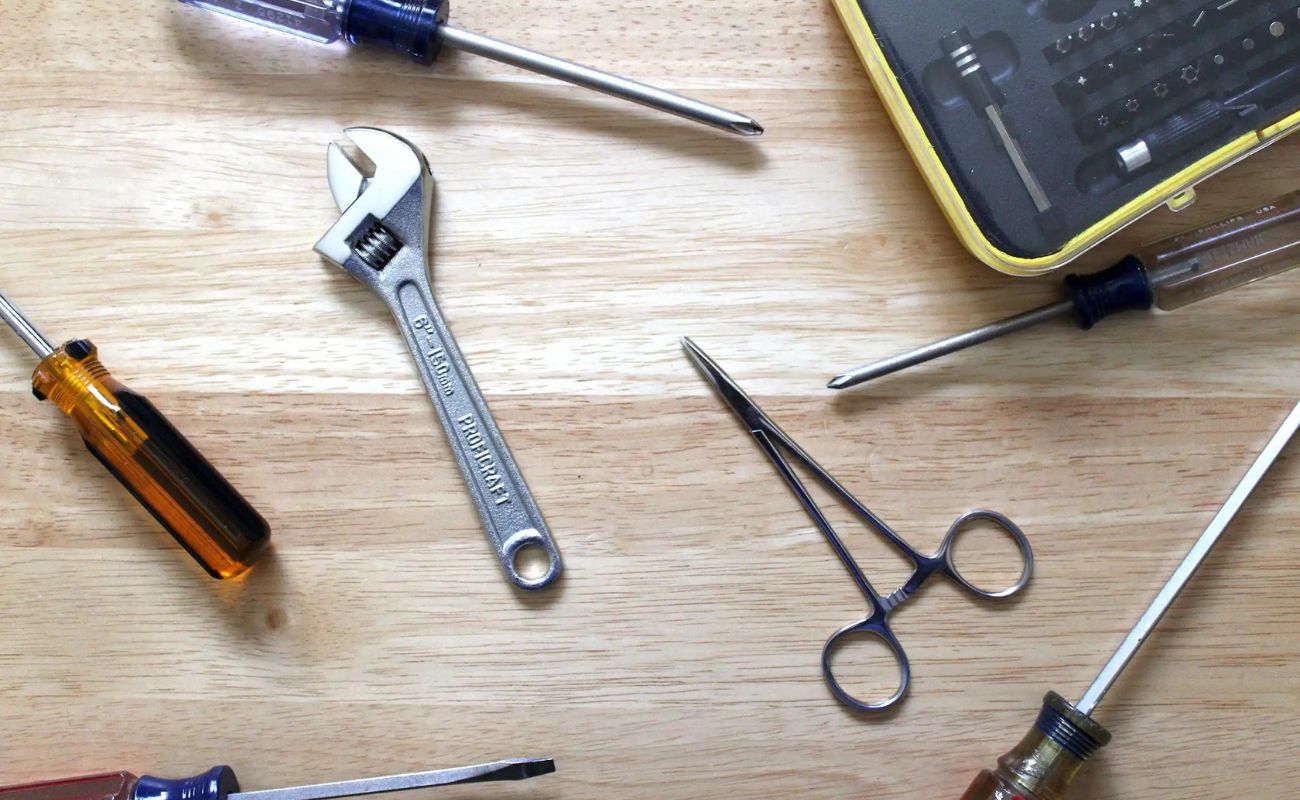

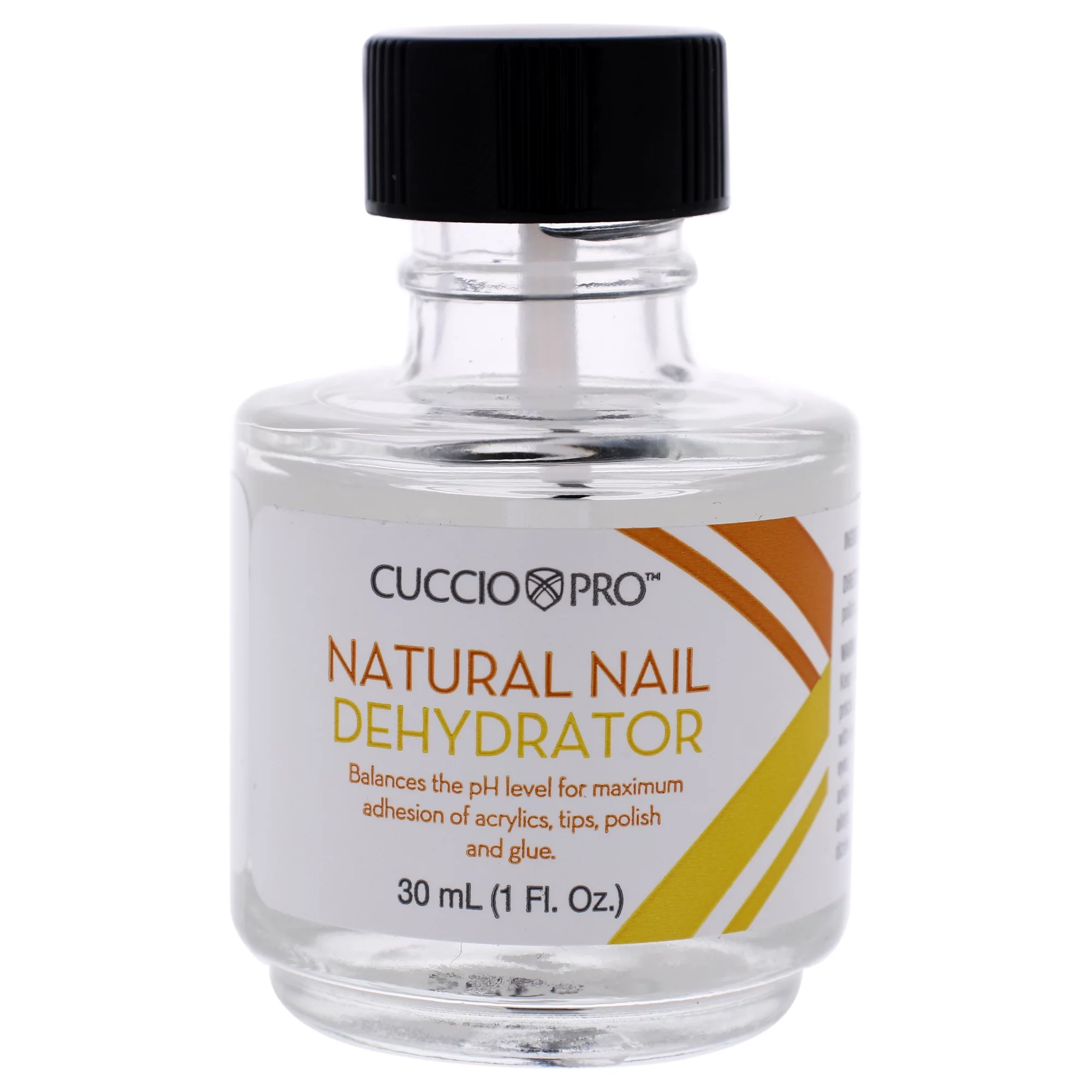

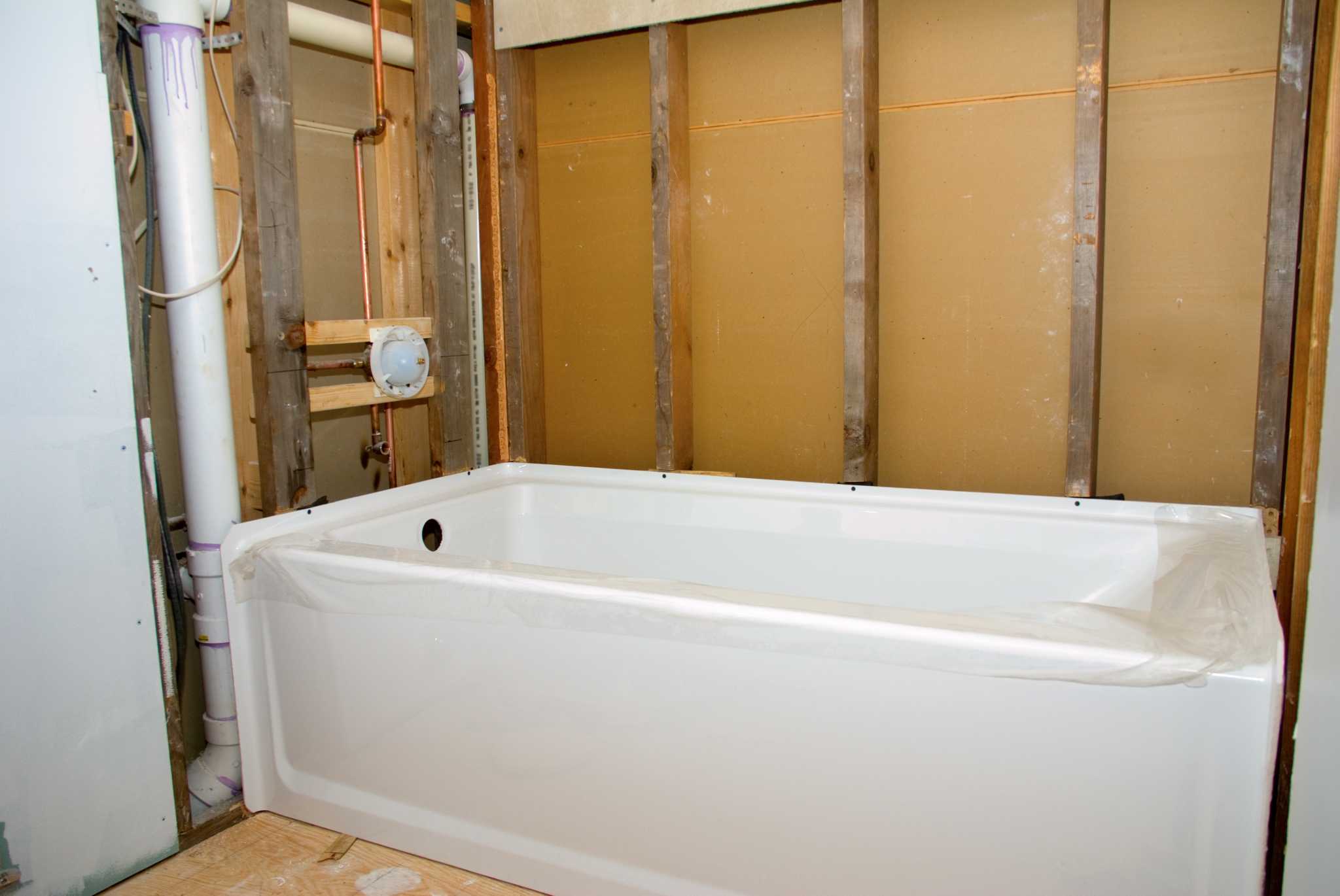

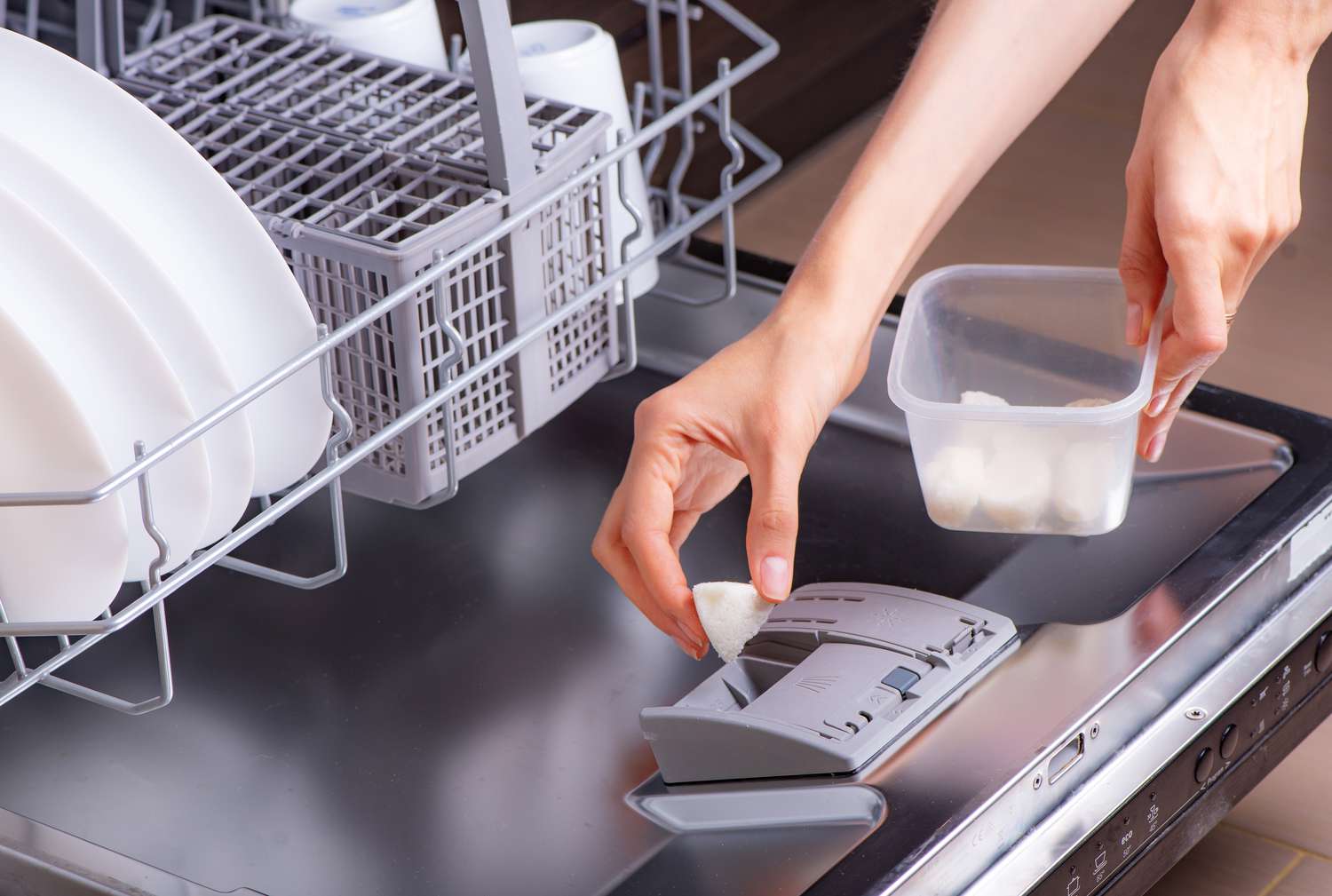
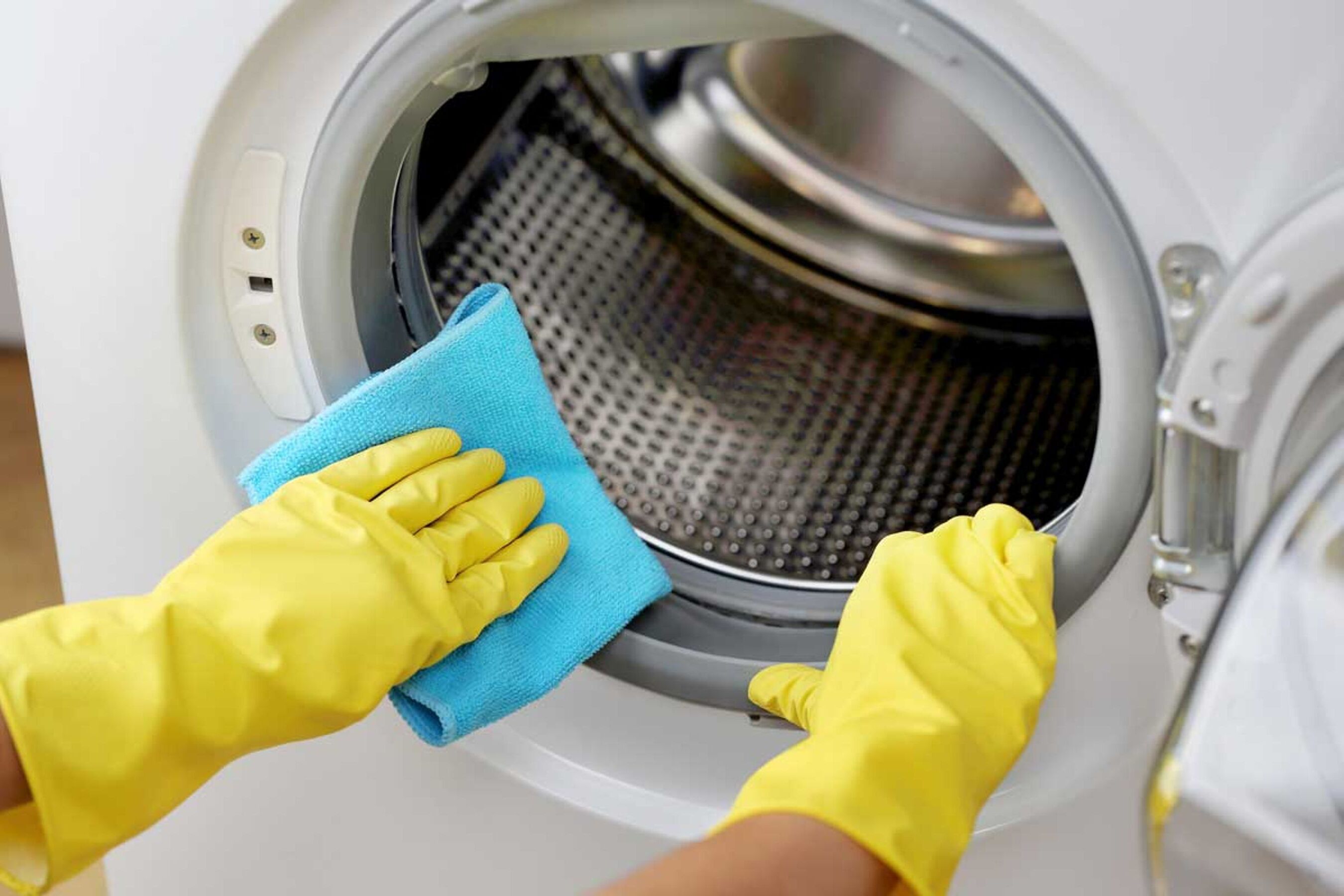

0 thoughts on “What Type Of Gases Can You Use On A Kegerator”